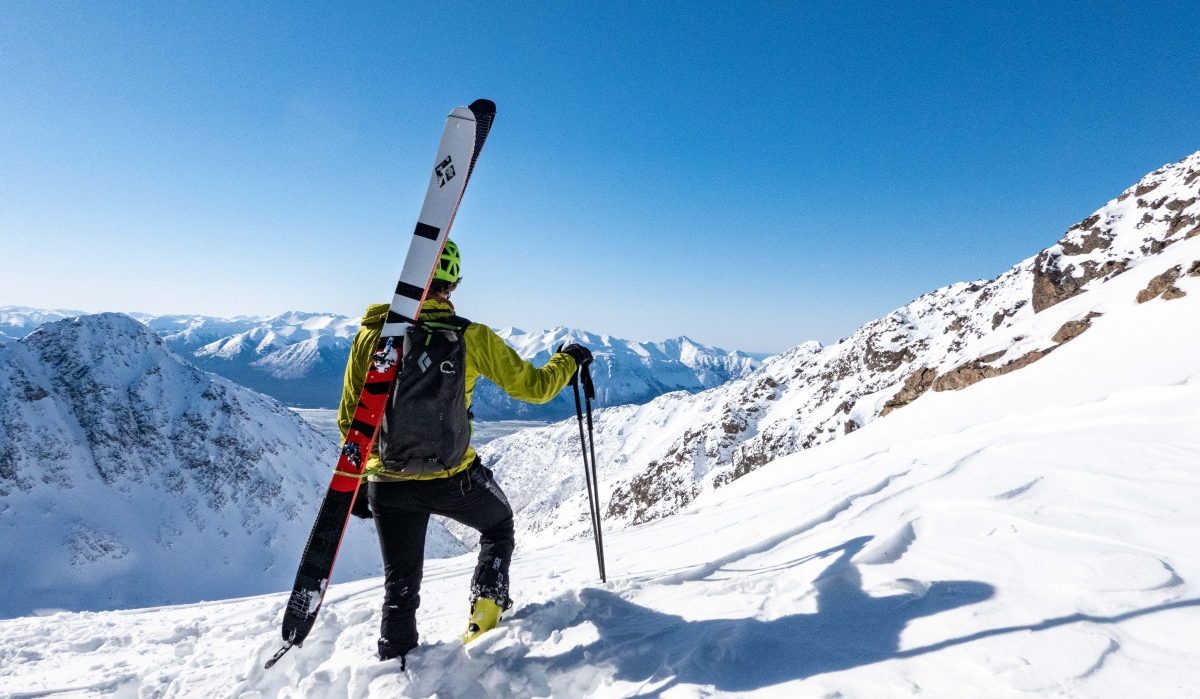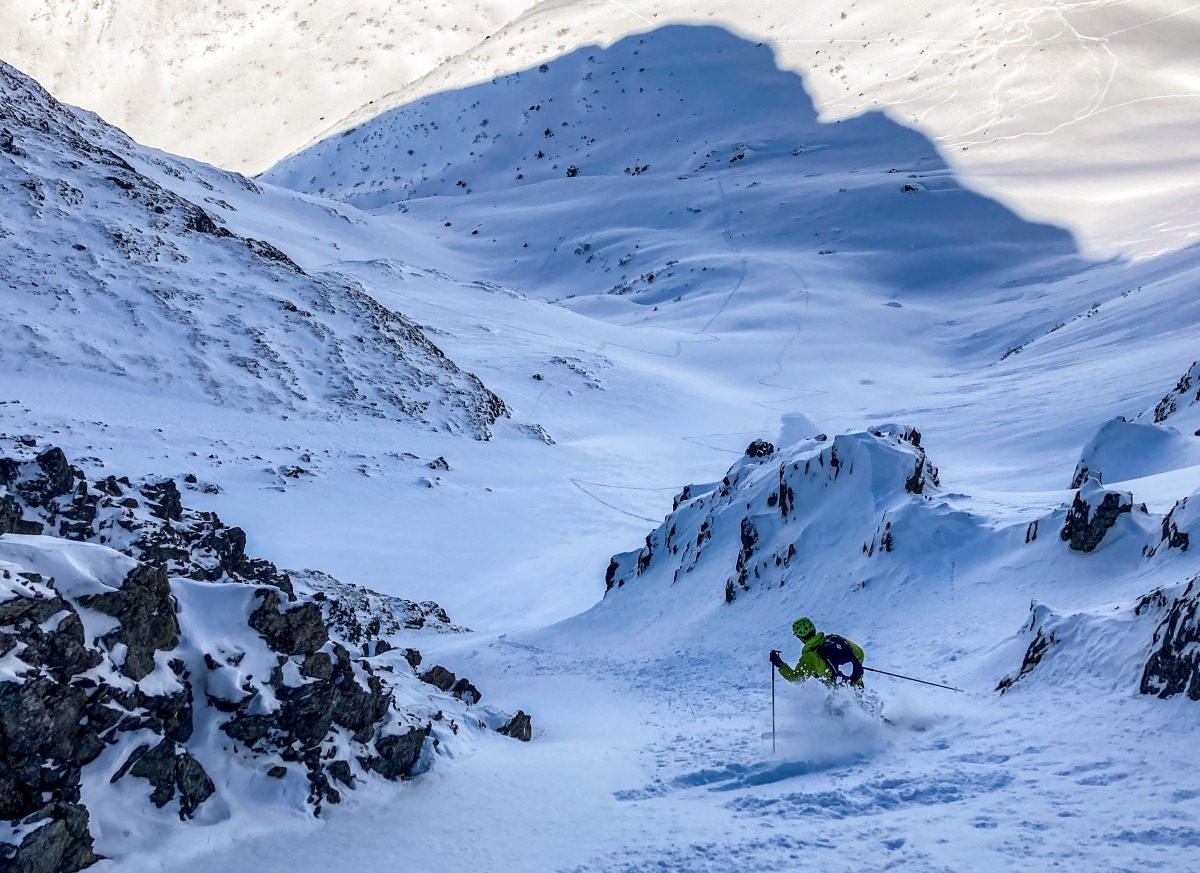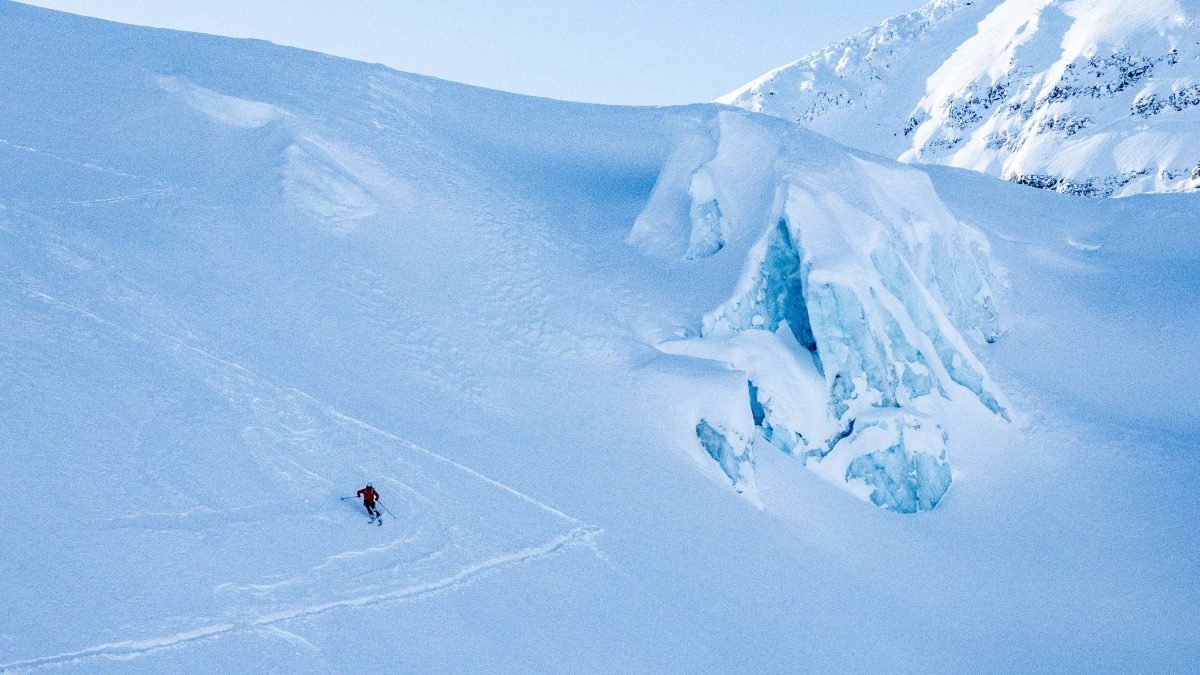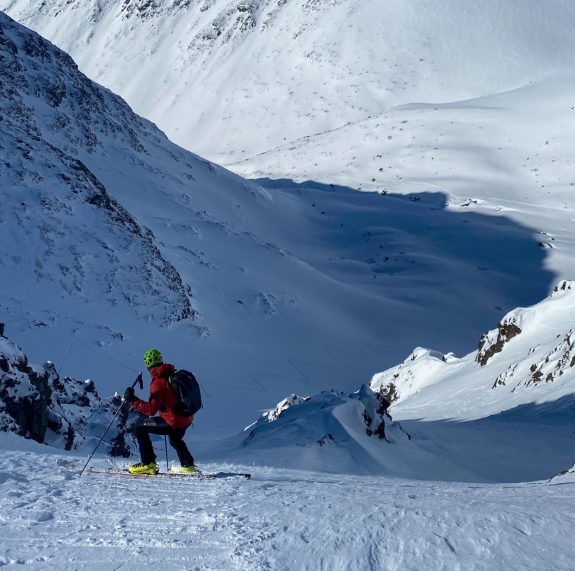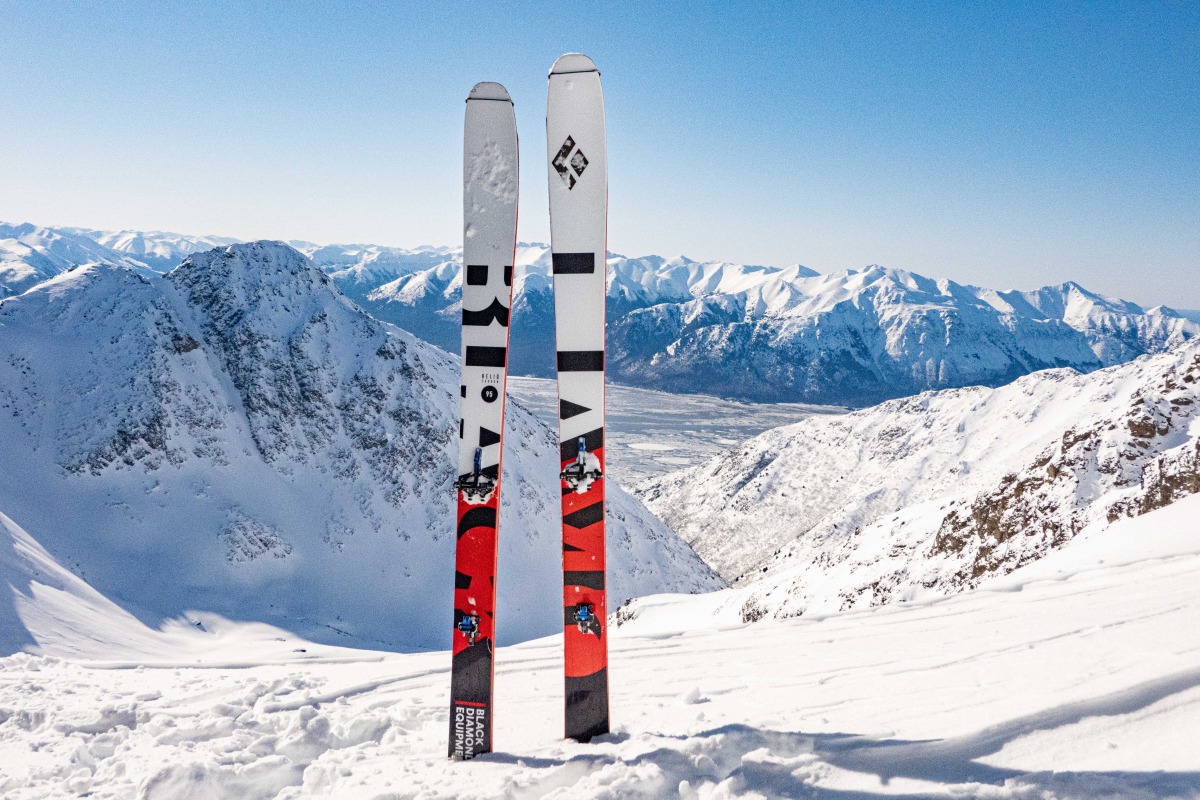Anyone who’s read Dolph Lundgren’s Wikipedia page knows full well that it takes a Fulbright Scholarship at MIT in chemical engineering to fully develop one’s appreciation for the hard-hitting, yet smooth style of Kyokushin Karate. Clearly this is no secret to the folks at Black Diamond, as the Helio Carbon ski’s redesign quite similarly utilizes a foundation in top-notch engineering to pack a precision punch: hard-charging, impressively stable, and surprisingly nimble for their size. (Interestingly, Lundgren’s 1985 major motion picture debut, A View to Kill, starts off with Roger Moore’s James Bond in perhaps the big screen’s most infamous ski chase…a story for another day).
The Black Diamond Helio, BDs lightweight line-up for the past five seasons, aims to allow for a burly ski feel in a light-ish package. I have had more days on Helios in the last few years than any other ski. The 88s have been my go-to ski mountaineering, long approach, techy ski for a while. The 105s were my daily driver, soft-snow ski for a few seasons (reviewed and compared to the 95 here). And I reviewed the Helio 76 here. The line got a redesign this year and I couldn’t wait to see what had changed and what stayed the same. The Helio Carbon 95 offered the chance to find out. Improved balance and power transfer make it a Black Diamond ski for black belt skiers.
[Details: I have been skiing the Helio Carbon 95 mounted with Helio 200 binding and Fischer Travers CS boots. I am 5’11 and 170lbs and have been on the 183s.]
The ‘Helio Carbon’ takes the spot in Black Diamond’s line-up that the ‘Helio’ used to occupy, while the ‘Helio Recon’ is akin to the old ‘Route’ model. The waist width and shapes are pretty much the same between each line (the Helio Carbon is offered at 88, 95, 104, and 114, and the Recon at 88, 95, and 105). The Carbon is lighter and stiffer (duh), while the Recon has a more traditional build.
Features
The most interesting thing to me about this year’s Helio Carbon 95 is that it doesn’t remind me of the earlier Helio 95. Out of the old Helio widths offered, the old 95 was my least favorite. The first generation 95 was easy to ski, but not quite zippy enough for a daily driver and not quite nimble enough for objective skiing—while a jack-of-all trades, it felt like a bit of a master of none. I know some lighter folks out there loved this ski (likely getting the ride I got out of the 105s), but I couldn’t quite find their lane. After this winter’s redesign, I am converted.
The biggest change between the old Helio and the new Helio Carbon is an engineered paulownia wood core (trading out a balsa falx core). Along with a bidirectional carbon weave and ‘elastomeric’ core damping materials – yea, I’m not really sure what that means either – the new construction gives the Helio Carbon a more stable ride, smooth ‘carvier’ turn, and playful edge. These skis feel heavier on the down, but at the same lightweight for the up.
On the snow
The Helio Carbon is not a featherweight division contender like say the Movement Alp Tracks or Fischer TransAlp, but a lightweight ski that maintains a bit of the umph of a heavier setup, akin to the Atomic Backland, the Scott Superguide, or the Blizzard Zero G. My first day out on them was a day at Tincan in Turnagain Pass. Strong winds the week before made for variable snow, overcast skies made for flat light, and cold air made for cold lungs. My partner and I begrudgingly skied a lap in the trees, it was ‘okay’ I thought. So, we skied another, and another, and another. Some 8,000 feet later, I figured the snow couldn’t have really been that bad. The Helio Carbon felt plenty light on my feet (especially mounted with Helio 200 bindings), but gave plenty of power to carve through a bit of crud on the down.
After another couple weeks of feeling out the Helio Carbon 95, I realized that I’d been skiing them through the first dry spell of winter, followed by back-to-back wind events, and I hadn’t actually skied the Helio Carbon in anything close to good snow. Nevertheless, I found myself reaching for them over other tried and true skis. For afterwork laps, they power through bad snow, edge on wind board, and charge downhill. Jump turns down icy couloirs feel precise and stable. Once the pow returned, I happily squeezed extravert with a ski that was light and zippy in good snow.
Room for improvement
The turning radius feels longer (it isn’t), and engaging the turn feels a bit less ‘snappy’ then the older model did to me–it may be that the new core trades a springy turn initiation for its improved stability, or that a stiffer wood just means a longer effective edge. This isn’t necessarily a con, but I think bigger skiers will like this ski more than smaller skiers. I also wish I had mounted them a touch back to get a bit more float in soft snow (I mounted at boot center)…
The top sheet chips (too easily), something I also noticed on the Helios. Fortunately I’ve never had any actual delimitation issues (I do not think it structurally matters because of the prepreg layup, but still, could be improved.)
Closing thoughts
Overall I have found the new Helio Carbons a hard-charging stable ride. They drive better in variable snow and have lost the chatter that plagues many carbon skis, gen 1 Helio included. They are fast and fun. Small and nimble enough for technical skiing or long tours, big enough for soft-snow on that favorite shoulder lap.
It skis. It handles well, doesn’t hold you up on the skin track, and gets the job done all day. It is still a jack-of-all-trades, but with a bit of literal and figurative ‘wax on, wax off’, the Helio Carbon 95 can now handle the hardest punch thrown by techy turns, puffy pow, wonky windboard, and everything in between as a skilled glisse master of the mountain dojo. It is a great big day, mank-busting, mid-fat all-around ‘quiver ski’.
SPECS
Construction: Pre-preg carbon layup, paulownia wood core, titanal mounting plate, 5mm ABS side wall
Shape: Early rise tip and tail (traditional camber underfoot), 327mm tip rocker, 236mm tail rocker
Turning radius: 20m
Dimensions: 125-95-114 (at 183)
Claimed weight: 1440g; confirmed: 1460g
Shop for the Black Diamond Helio Carbon 95.
[Disclaimer: Unrelated to WildSnow, I’ve done some work with BD advising on sustainability. That said, I don’t have any inside scoop on the Helio Carbon and write this merely as a skier with plenty of turns on the Helio.]
Dr. Alex Lee lives in Anchorage, Alaska. Alex is a professor at Alaska Pacific University, teaching philosophy and environmental studies. He also works as a sometimes guide, naturalist, writer, and photographer.

